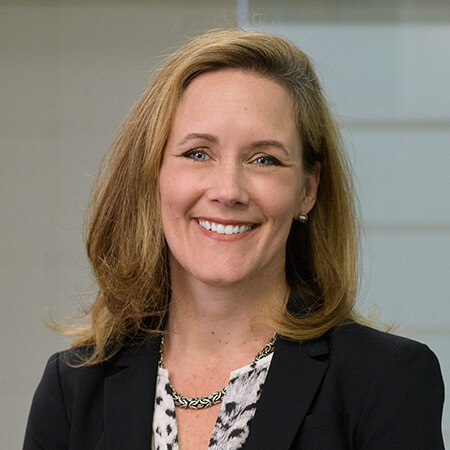The start of a new year often inspires reflections on the past, with renewed effort to apply any lessons we've learned to try to anticipate

To Give or Not to Give is Only Part of the Question
We are humbled by the philanthropic nature of our clients and community. In 2012, (the most recent year statistics are available), charitable contributions from American individuals, corporations and foundations increased for a third straight year, reaching $316.23 billion in total giving. Of the top 50 philanthropists of 2012, 20 of them live in California with 70% of those charitable funds being donated to entities within the state. According to the Chronicle of Philanthropy, among the five top philanthropists in 2012, three were couples under the age of 40. Americans, fueled by favorable gift tax limits and strong investment performance, continue to give. We are honored and delighted to have many of these charitably minded benefactors as clients.
In our continuous efforts to provide meaningful solutions to our clients, a significant consideration is the decision-making process involving tax and estate planning strategies. Understanding the differences among approaches for charitable giving allows for informed decisions that directly impact the reach of your charitable donations and the maximization of tax benefits. In many cases the tax savings between these strategies can be significant.
“Checkbook” giving is the most common but least efficient method of giving. For families considering or actively donating significant sums of money, alternative methods provide greater efficiency and a broader selection of accepted assets. This approach, in turn, has the potential to significantly magnify the ultimate tax benefits.
One preferred alternative is a donor-advised fund, defined as a charitable giving vehicle administered by a public charity. These funds are created to support and manage charitable donations on behalf of an organization, family, or individual and have grown significantly in their usage over the past several years. Donor advised funds have evolved over time with improved ease of use, and exceptional features and benefits that result in the most simply structured and efficient transfer of your charitable dollars. Another vehicle for philanthropic giving is the private foundation, a charitable organization with a principal fund managed and supported by its own directors and trustees. While the private family foundation is very attractive for some families, it is more time consuming and costly than a donor advised fund.
As opposed to checkbook giving, charitable giving through a donor-advised fund or private foundation allows publically traded securities, complex assets, and even real estate to be transferred. Additionally, in the case of a private family foundation, tangible personal property is also acceptable. In cases involving these complex assets, donors may be able to give in a bigger way and potentially recognize greater tax incentives because of the complexities of these assets and their transfer. Thoughtful, well planned strategies in partnership with your advisor and the DAF provider allow for an efficient fulfillment of philanthropic goals.
There are differences in the levels of control within each structure as well. If you want full control, but also the recordkeeping responsibilities that go along with it, checkbook giving is for you. Private foundations also have full control of their grant-making but are subject to IRS reporting and compliance regulations and all transactions are recorded and tracked by officers of the foundation. Additionally, by IRS rules and regulations, private foundations are required to donate 5% of the value of the foundation every year. A donor-advised fund program simplifies and consolidates recordkeeping and tax reporting and grants are recommended to IRS-qualified charities.
An important consideration for some donors is protecting their anonymity. Under a private foundation, annual tax filings are a public record of assets, contributors, and grants. In contrast, checkbook giving of cash can be made anonymously, and a donor-advised fund allows the donor to choose whether he or she wants to be acknowledged on grants or to remain anonymous.
There are many more important differences between each gifting strategy, with cost being another critical distinction. If you are interested in learning more please contact us; we are happy to help explore your strategic preferences and help make your charitable donations go further through smart execution.
Articles and Commentary
Information provided in written articles are for informational purposes only and should not be considered investment advice. There is a risk of loss from investments in securities, including the risk of loss of principal. The information contained herein reflects Sand Hill Global Advisors' (“SHGA”) views as of the date of publication. Such views are subject to change at any time without notice due to changes in market or economic conditions and may not necessarily come to pass. SHGA does not provide tax or legal advice. To the extent that any material herein concerns tax or legal matters, such information is not intended to be solely relied upon nor used for the purpose of making tax and/or legal decisions without first seeking independent advice from a tax and/or legal professional. SHGA has obtained the information provided herein from various third party sources believed to be reliable but such information is not guaranteed. Certain links in this site connect to other websites maintained by third parties over whom SHGA has no control. SHGA makes no representations as to the accuracy or any other aspect of information contained in other Web Sites. Any forward looking statements or forecasts are based on assumptions and actual results are expected to vary from any such statements or forecasts. No reliance should be placed on any such statements or forecasts when making any investment decision. SHGA is not responsible for the consequences of any decisions or actions taken as a result of information provided in this presentation and does not warrant or guarantee the accuracy or completeness of this information. No part of this material may be (i) copied, photocopied, or duplicated in any form, by any means, or (ii) redistributed without the prior written consent of SHGA.
Video Presentations
All video presentations discuss certain investment products and/or securities and are being provided for informational purposes only, and should not be considered, and is not, investment, financial planning, tax or legal advice; nor is it a recommendation to buy or sell any securities. Investing in securities involves varying degrees of risk, and there can be no assurance that any specific investment will be profitable or suitable for a particular client’s financial situation or risk tolerance. Past performance is not a guarantee of future returns. Individual performance results will vary. The opinions expressed in the video reflect Sand Hill Global Advisor’s (“SHGA”) or Brenda Vingiello’s (as applicable) views as of the date of the video. Such views are subject to change at any point without notice. Any comments, opinions, or recommendations made by any host or other guest not affiliated with SHGA in this video do not necessarily reflect the views of SHGA, and non-SHGA persons appearing in this video do not fall under the supervisory purview of SHGA. You should not treat any opinion expressed by SHGA or Ms. Vingiello as a specific inducement to make a particular investment or follow a particular strategy, but only as an expression of general opinion. Nothing presented herein is or is intended to constitute investment advice, and no investment decision should be made based solely on any information provided on this video. There is a risk of loss from an investment in securities, including the risk of loss of principal. Neither SHGA nor Ms. Vingiello guarantees any specific outcome or profit. Any forward-looking statements or forecasts contained in the video are based on assumptions and actual results may vary from any such statements or forecasts. SHGA or one of its employees may have a position in the securities discussed and may purchase or sell such securities from time to time. Some of the information in this video has been obtained from third party sources. While SHGA believes such third-party information is reliable, SHGA does not guarantee its accuracy, timeliness or completeness. SHGA encourages you to consult with a professional financial advisor prior to making any investment decision.









